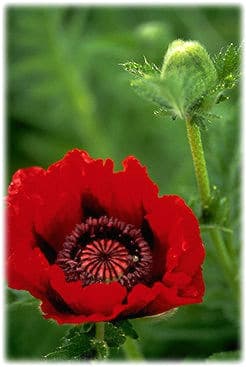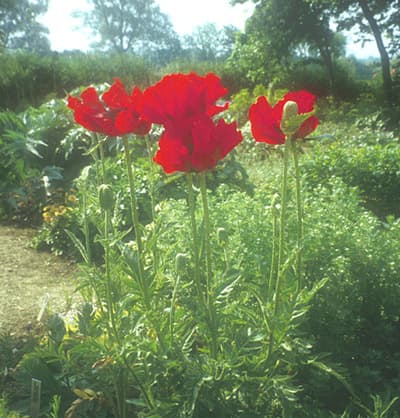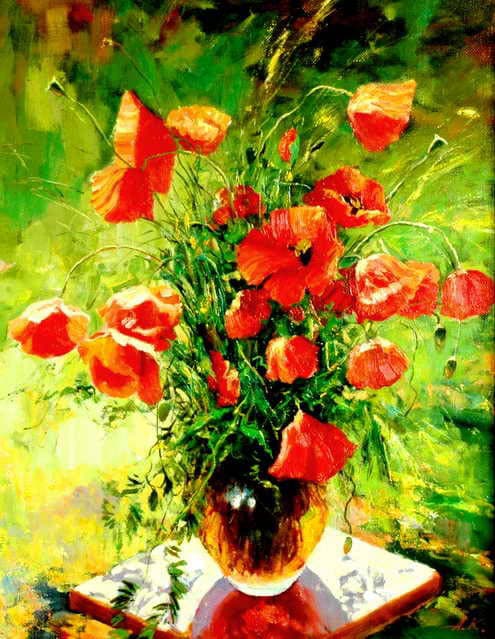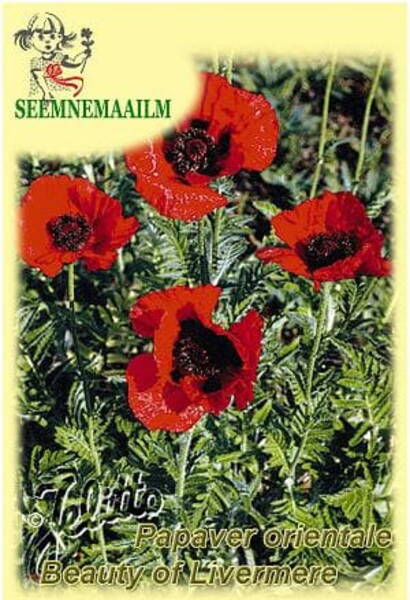Perennial plant from the Papaveraceae family.
Origin: Southwest Asia.
Distinguishing Features: bright red, large flowers that look like crepe paper.
Easily grown from seed. 1.0 g = 6300 pieces.
Flower color: bright red.
Foliage: pinnatipartite.
Height with flowers: 80 cm.
Natural flowering period: May - June.
Distance between plants when planting: 45 cm.
Soil requirements: dry, well-drained, medium fertile.
Winter hardiness zones: Z3 - Z8.

Location: all poppies are light-requiring, cold-hardy, winter-hardy perennial species.
Soil: undemanding to the soil. Poorly tolerate stagnant water.
Care: respond well to the application of mineral and organic fertilizers. This gives the leaves a rich dark green colour, the flowers - larger sizes, the colour - brightness.
Caring for poppies is not burdensome - weeding, loosening, watering in drought, pinching off faded flowers.
Perennial poppies are propagated by seeds, roots and green cuttings. Seeds are sown in spring. They germinate in two weeks. Seedlings dive with the appearance of 1-2 true leaves immediately to a permanent place. Side shoots are taken on cuttings in the form of small rosettes, which grow in spring or at the end of summer, are planted on moistened ridges and driven. They take root 2-3 weeks after planting. Grow 1-2 years. Transplantation is painfully tolerated, so it is better to immediately plant them in a permanent place.
Use: look beautiful in mixborders, groups, flower beds, rocky gardens and cut, but do not last long. In early spring, plant a few young plants in pots - later it will be difficult to dig them out, as the plants quickly form a long tap root.
Bright luxurious poppies are known even to those who have never grown flowers. Because without the colourful carpet of these plants, it is impossible to imagine the warmth and joy of the middle of summer. However, perennial poppies can enchant us not only with flowers but also with the grace of leaf rosettes.


Oriental poppy. Bot. syn.: Papaver bracteatum.













